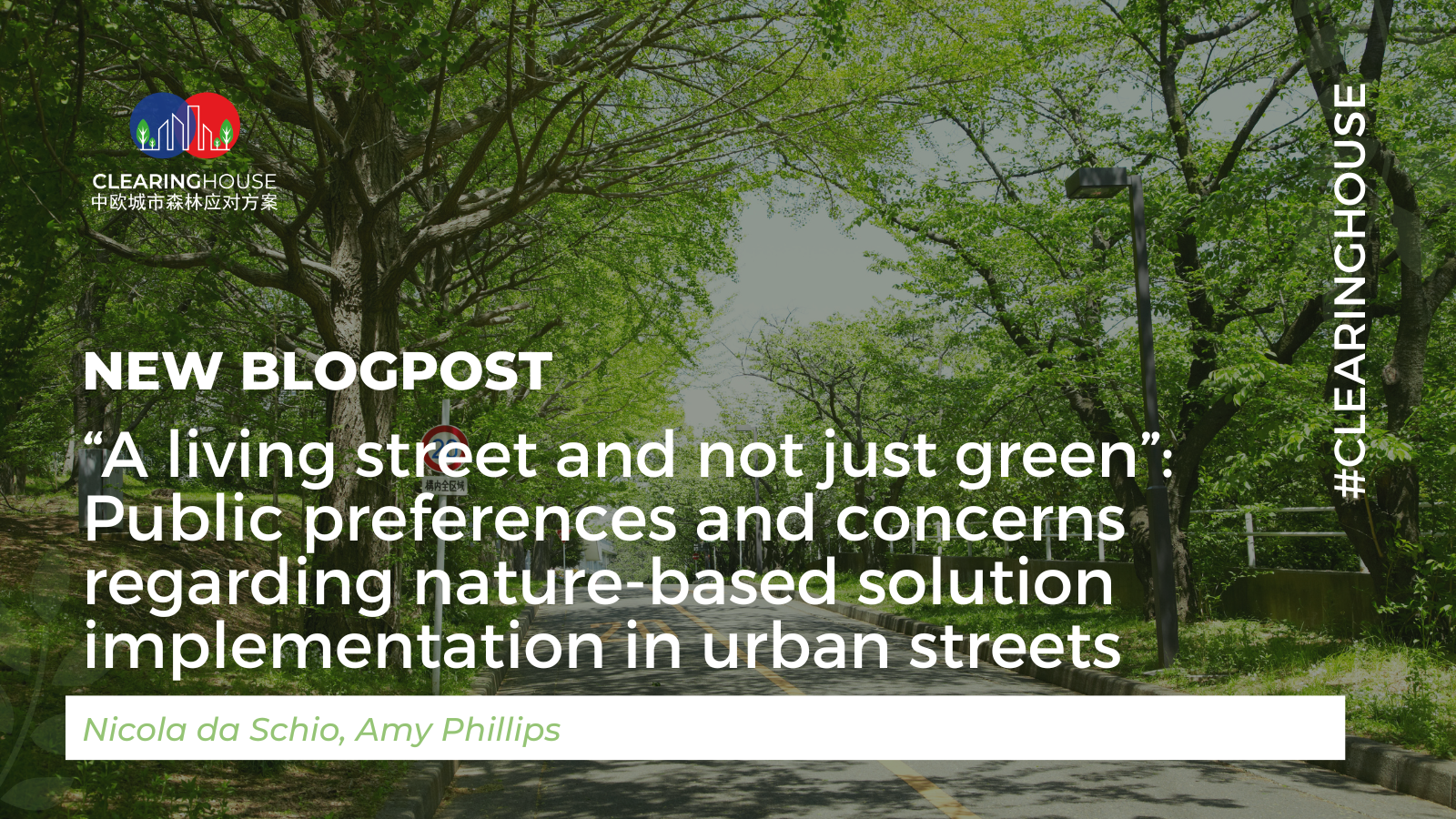
“A living street and not just green”: Public preferences and concerns regarding nature-based solution implementation in urban streets
Greening urban streets presents an opportunity to expand and complement the ecosystem services provided by parks, delivering these services to spaces urban dwellers frequently encounter. But what do urban dwellers think about having a greener street? In an article recently published on Urban Forestry & Urban Greening, CLEARING HOUSE colleagues of the Vrije Universiteit Brussel (VUB) provide some answers to the question.
Find the full article here: https://doi.org/10.1016/j.ufug.2023.128034
—–
Urban public space is largely composed of streets, more so than other types of public space, and most of the time we spend outside in the city is not spent visiting parks but on streets. Street greening has enormous potential to improve well-being, and, in addition to many of the benefits that characterize urban greening in general, it provides several distinct benefits. For instance, compared to grey streets, greener urban streets have greater restorative potential, are associated with better self-reported health, and are important sites for outdoor activity. Additionally, inadvertent daily contact with nature has been found to reduce depression risk. As direct nature experiences in cities are a “rarity”, greening these spaces of frequent encounter may contribute to a more equitable supply of green benefits beyond those provided by parks.
While many studies have explored the suitability of NBS in a particular street considering the benefits they provide in relation to local environmental challenges, we focused on residents’ perspectives on and their demand for NBS. Given the importance of public acceptance of NBS measures for their success, these insights may inform planners of decisions that can boost approval for NBS.
Our research is based on a mixed-methods study, combining an online survey and eight focus group interviews, which aimed to better understand which types of NBS people prefer, how much and what types of street space they are willing to exchange for street greening, and the opportunities and concerns they have regarding varying degrees of street greening.
Here are some of the most interesting findings.
Overall, we found a high degree of willingness to implement nature-based solutions, with more than 50% acceptance for most street-based nature-based solutions. Green pavement was the NBS selected by the most respondents, followed by street trees.
Interestingly, the amount of surrounding greenness did not play a significant role in whether or not respondents were in favour of having NBS implemented. Among the survey respondents, this preference was related more to personal factors: age, for instance, seems to be significantly related to these preferences, with younger people showing the highest rate of approval.

The research also touched upon whether “wild” or “maintained” green is preferred, and by extension on questions related to the purposes of vegetated space (i.e. space dedicated to recreation or nature). In general, there seems to be a preference for wild greenery, which was associated with greater biodiversity and variety, if compared to maintained greenery.
There is not one single model of the green street that should be implemented. Rather, configurations may range from minor improvements of the current set-up (where the space for motorized mobility is reduced but remains an important element) to more radical transformation through widespread implementation of vegetation at the expense of motorized traffic. We were therefore curious to know which types of street configurations (meaning how much space should be allocated to greening) people preferred. The graph below summarizes the amount and type of street space survey respondents were willing to exchange for NBS implementation. It is particularly interesting how the fact of not owning a car is generally associated with a more ambitious idea for a green street.

Another interesting element we found from our focus group discussions is that a green street is not just about green. The potential of green to foster positive relationships with neighbours, in fact, was largely acknowledged, indicating that respondents recognize that green streets can foster social cohesion.
Importantly, the research also helped reveal some concerns about greener streets. For instance, greening was, at times, associated with greater feelings of insecurity due to the creation of more “dark places” and concern that the street would lack liveliness. Another consideration was a foreseen change in the experience of noise. The greenest streets were generally thought to be quieter due to the lesser presence of cars. However, if such a street encourages new uses, such as recreation, participants recognized that other noises (e.g. people talking, children playing) would likely increase.
Overall, this research showed how street greening is bounded by a change in the way a street is perceived and used. This obviously involves a great deal of complexity, and also of potential conflict with other users and uses. All these factors should be considered in the planning of street green and innovative solutions will be needed to address these challenges, as well as experimentations and tests of new street configurations.
And you, what street would you prefer?

Authors: Nicola da Schio, Amy Phillips
